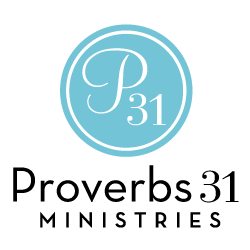Karen and I are so pleased to have our friend Glynnis Whitwer guest blogging today. She’s our go-to-girl for all things organizational, so when one of our readers asked a question about organizing her speaking materials, we knew that Glynnis would be the one to help us all. Please welcome her!
Years ago I walked into my pastor’s office a bit in awe. The woodsy smell of books spoke of his love of all things associated with words and the Word. He conveyed a scholarly attitude as we discussed the theological question that brought me to his office that day.
After sharing Scripture and some thoughts on my questions, he rose and took a few steps to a tall filing cabinet adjacent to his desk. Opening the second drawer, he reached in and pulled out a manila file packed with papers. Before he could close the door, my nosey self had glimpsed into the inner sanctum of how a pastor organized his research.
The drawer was filled with files just like the one he pulled out. Each was labeled with a different topic and sorted alphabetically. There must have been hundred of files! Our attention then turned to the file in his hands and he opened it to reveal magazine clippings, hand written notes, jokes and stories all pertaining to the topic at hand.
His effortless ability to access his collection of information impressed me then and now. And the visual image of organizing information is one that inspires me to do the same. Especially since my capacity to forget things astounds me. Ideas that seem so brilliant I will NEVER forget them somehow vaporize the next day. Websites I’m sure I’ll remember are lost in cyberspace, never to be found again.
As a writer and speaker, the ability to organize and access my research is critical – especially when I’m working on a project like a book or a retreat. I never know when I might want to refer to a resource. And if my writing needs footnotes, I can waste a lot of time backtracking.
Now that I’ve written a few books, here are some tips that helped me keep things in order.
1) As I start researching the topic, I pull books from my bookshelf and keep them together. That way I remember which books I’m using.
2) Then, I set up folders in Word for each chapter. For those who prefer to manage paper, this can also be done by setting up actual folders or an accordion file.
3) As I discover things I want to remember, I create documents within the folders. Usually I start with a simple Word document into which I type ideas, quotes, facts, stories, etc. I also copy and paste websites into this document.
For example, in my last book I had a chapter on time management. Months before I wrote the chapter, I started compiling ideas into the folder. So when I got to that chapter, all my research was in one place.
4) For quotes in a book that need a footnote, write your footnote as you copy your quote. It will save you hours.
5) Use folders to organize websites. Get to know how your Internet browser organizes links. Learn to use folders to save important websites.
6) For those who are more comfortable using digital programs, consider organizing all your ideas with online note taking software like Evernote, Springpad, OneNote or Simplenote.
The key to effectively organizing information is to have it all in one place – whether that’s a 3-ring binder and paper, Word folders or a digital software. The ideas are what matter, not how you manage them.
Glynnis Whitwer is a wife, mother, author and speaker. Her newest book, I Used to Be So Organized, has help ranging from our thoughts to our homes for the organizationally-challenged . Glynnis is the editor of P31 Woman Magazine and leads the writers for Proverbs 31Ministries. She loves office products, Starbucks and singing to Jesus. You can read more of her down-to-earth wisdom at www.glynniswhitwer.com.
a wife, mother, author and speaker. Her newest book, I Used to Be So Organized, has help ranging from our thoughts to our homes for the organizationally-challenged . Glynnis is the editor of P31 Woman Magazine and leads the writers for Proverbs 31Ministries. She loves office products, Starbucks and singing to Jesus. You can read more of her down-to-earth wisdom at www.glynniswhitwer.com.




